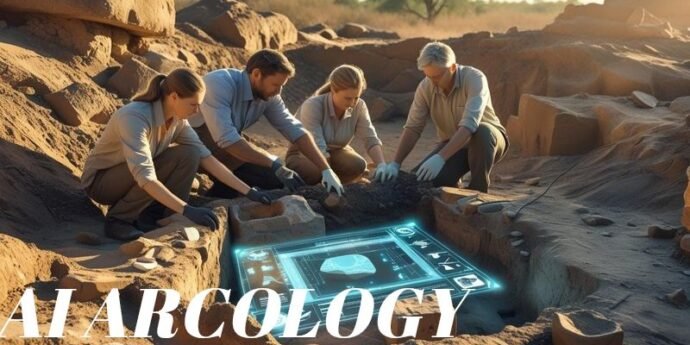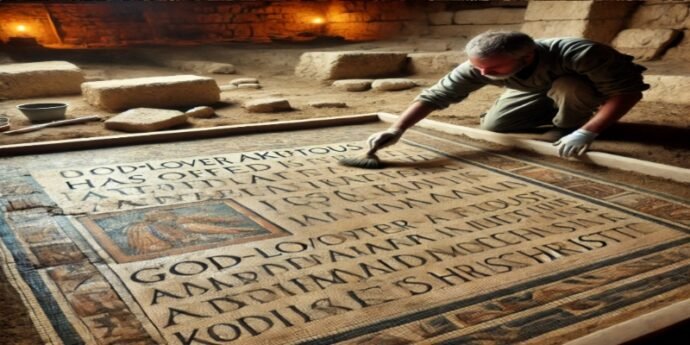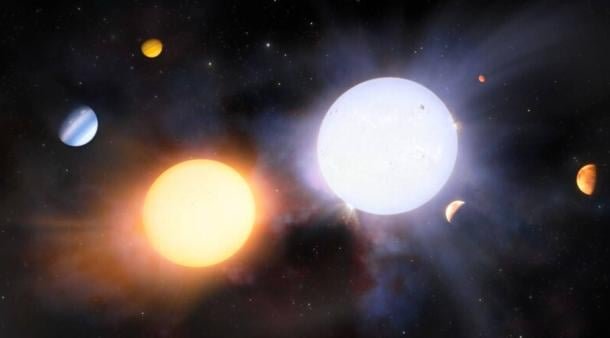Humanity has always been fascinated by lost cities — places buried under jungles, deserts, or even ocean beds. But now, with AI, we are entering an age where even the most hidden secrets can be uncovered. In this article, you will explore 5 shocking ways AI finds lost cities, showing how cutting-edge tech is changing modern archaeology forever.
Why Lost Cities Fascinate Us

Lost cities like Atlantis, the Mayan ruins, and the Indus Valley civilization captivate our imagination. For centuries, explorers searched for these mysteries. Now, AI finds lost cities with speed and precision that was once impossible.
Legends, Myths, and Ancient Civilisations
Legends talk about cities swallowed by nature or lost to time. But thanks to AI, these myths are becoming real discoveries. This is why understanding 5 shocking ways AI finds lost cities is so exciting.
AI Analysing Satellite Images
One of the 5 shocking ways AI finds lost cities is by analysing thousands of satellite images collected from around the world. Traditional archaeologists took years, even decades, to manually scan these massive datasets, hoping to spot subtle signs of ancient structures. But now, AI finds lost cities by recognising hidden patterns in landscapes that human eyes often miss, such as unusual soil marks, vegetation changes, or tiny elevation differences.
These advanced algorithms can process vast regions in hours, allowing archaeologists to focus their efforts on the most promising sites. Thanks to this powerful combination of satellite imagery and AI, discoveries that once took a lifetime can now happen in a fraction of the time, opening up a new era of exploration and rewriting what we know about ancient civilisations.
How AI Spots Hidden Ruins from Space
One of the 5 Shocking Ways AI Finds Lost Cities is by using AI systems that can detect even the slightest ground shifts, subtle vegetation changes, or minor soil differences that would be impossible for humans to notice with the naked eye.
This incredible technology means that AI finds lost cities that have been buried under forests, deserts, or urban areas for centuries.
For example, this technique has already revealed hidden ancient sites in places like Egypt, where lost pyramids and settlements have been discovered under the sand.
In Mexico, AI finds lost cities of the Mayan civilisation by spotting changes in forest canopies and soil patterns.
Similarly, in Cambodia, entire networks of temples and roads lost for hundreds of years have been mapped out thanks to these AI systems.
These discoveries prove that one of the 5 Shocking Ways AI Finds Lost Cities is by transforming simple satellite and aerial data into powerful archaeological clues, helping researchers uncover the hidden stories of our past.
Lidar Scans with AI Enhancement

Lidar technology has already changed the way archaeologists search for ancient sites by scanning dense forests and creating 3D maps of the ground below thick vegetation. But what makes this one of the 5 Shocking Ways AI Finds Lost Cities is how AI takes Lidar data even further.
Traditional Lidar scans generate massive amounts of raw data, which can be overwhelming to analyse manually. Here, AI finds lost cities by processing this huge dataset and enhancing it with advanced algorithms that can detect hidden structures like ancient roads, buried temples, and forgotten settlements under thick jungle canopies.
For example, in Central America, AI-enhanced Lidar has uncovered massive Mayan cities hidden beneath rainforests that experts never knew existed. This proves that combining Lidar with artificial intelligence is not just a tool but a breakthrough for modern archaeology.
By using pattern recognition and data filtering, AI removes noise and highlights the tiniest details, making invisible sites visible. This is why Lidar technology, when powered by AI, stands out as one of the 5 Shocking Ways AI Finds Lost Cities, opening doors to discoveries that rewrite human history
AI Reading Ancient Texts & Maps

Whenever we search for old cities or civilisations, one of the biggest challenges is to understand those ancient languages and scripts, which once contained the entire knowledge of those civilisations, maps, secrets of temples, and the lives of kings and emperors. This is a method that is indeed the most shocking and intelligent among the 5 Shocking Ways AI Finds Lost Cities.
In ancient times, a whole team of scholars had to be employed to read these languages. For example, look at India – we have so many ancient scripts and languages. Brahmi script, Sharada script, Nagari script, oral Vedic Sanskrit, Prakrit, Pali – all of these were very different from each other. Then, the address of an old city or empire was hidden in some of these inscriptions, copper plates or manuscripts. But reading these scripts was very difficult because they contain faded ink, broken manuscripts, inscriptions on pottery or broken stones.
Why only India, such languages have existed all over the world – Egyptian hieroglyphs, Mesopotamian cuneiform, Mayan glyphs, Inca civilisation’s quipu knots (which counted knots instead of words). It used to take centuries to read them all. In the olden days, one scholar would come from Germany, another from Italy, and the third from Egypt. All of them would decode the words together – even then, many times the work would remain incomplete, and the expenses would go into lakhs.
But today, Archaeology AI can do this difficult task in just a few hours or days. This AI scans thousands of old scripts, inscriptions, scrolls, and manuscripts and then applies natural language processing (NLP) and deep learning algorithms on them. With this, even faded words can be read, broken sentences can be reconstructed, and AI fills the missing parts by matching similar words from its massive database. This is how AI finds lost cities by reading forgotten languages!
Suppose there is an old Vedic verse that mentions a river, mountain or a route. AI Sanskrit NLP tools can decode it and compare it with satellite maps to see where that route appears in today’s maps. Similarly, in the inscriptions in the Egyptian pyramids or the symbols in the Dead Sea Scrolls, AI finds lost cities by comparing these signs with other ancient records. This is why this method is one of those 5 Shocking Ways AI Finds Lost Cities, which is completely changing the world of archaeology.
Not only this, today these AI systems use multilingual models to connect one language to another. That means Egyptian hieroglyphs can be translated into Arabic, English or Hindi. India’s ancient Nagari or Vedic Sanskrit can be converted into modern Hindi or English, which will make it easier for researchers, students and archaeologists.
For example, sometimes such symbols are found in old Jain inscriptions, Ashokan edicts, or Harappan seals that have not been completely deciphered till date. But now attempts are being made to decode Harappan script by training AI models.
So, today the ancient languages of the world like Egyptian Hieroglyphs, Mayan glyphs, Cuneiform (Sumerian), Vedic Sanskrit, Brahmi, Sharda, Old Persian, Latin, Ancient Greek, and Chinese oracle bone script have all been collected by AI in a virtual library. Their pattern analysis, cross-linguistic translation and missing link filling is the next level revolution in archaeology.
Ultimately, this is the reason why decoding ancient languages is not just a translation for AI – rather, it is the gate through which clues about lost cities are found. This is why researchers say that reading forgotten scripts is one of the biggest ways that history is being revived.
AI + Drones for Real-Time Mapping

Combining AI and drones is the final and perhaps the most futuristic of the 5 Shocking Ways AI Finds Lost Cities. This method is considered a game changer in archaeology because now humans do not need to physically enter dense forests, dangerous mountainous terrain, or inaccessible deserts.
Today’s smart drones don’t just fly with cameras—they are equipped with advanced tools like thermal sensors, multispectral cameras, and lidar scanners. As these drones fly through the sky, they collect thousands of high-resolution aerial images and 3D terrain maps in real time. But just collecting data is not enough—this is where AI enters the scene!
AI finds lost cities by processing this massive drone data in seconds—it detects hidden stone walls, buried temple structures, hidden mounds, and underground passageways inside dense forests. Where traditional archaeologists would take years to check these aerial photos by hand, AI does this work in a few hours with the help of pattern recognition algorithms.
For example, many ancient settlements in the Amazon rainforest are completely hidden under a thick canopy of trees. Drones capture canopy penetration images, and AI enhances and filters this raw data to find lost cities — thus, AI catches clues that human eyes miss.
This technique is very promising for the future in India, too. Imagine flying drones in dense jungles like the Western Ghats or unexplored valleys of Northeast India to find hidden forts, ancient trade routes, or lost cities. This is the new and exciting method that is today giving new clues to archaeologists around the world in 5 Shocking Ways AI Finds Lost Cities.
Not only this—this pair of drones and AI works in real-time collaboration. That is, if the AI detects any unusual ground pattern, then it also commands the drone to zoom in again and take detailed scans. This saves both time and human effort.
In conclusion, this combination of drones and AI is bringing a silent revolution in archaeological research. Where it once took an entire generation to find lost cities, now the same clues can be found in a few months or weeks. This is why researchers believe that combining AI and drones is truly the final yet one of the most powerful among the 5 Shocking Ways AI Finds Lost Cities.
Combining Aerial Data with Machine Learning

Combining aerial data with machine learning is truly one of the most advanced techniques among the 5 Shocking Ways AI Finds Lost Cities. When drones or satellites fly over dense forests, deserts, or remote valleys, they collect thousands of high-resolution aerial photos, thermal images, and LiDAR scans.
But the real magic happens when machine learning algorithms start to instantly analyse these aerial images. Traditional archaeologists used to spend months manually studying these photos, but now AI finds lost cities by detecting unusual land shapes, mounds, hidden ruins, and faint patterns that human eyes usually miss.
For example, AI-enhanced aerial scans in the dense jungles of Cambodia uncovered many ancient Khmer temples and settlements hidden beneath a thick canopy. Even hidden cities inside the Amazon rainforest in South America were found by combining AI and aerial data.
This technique is an absolute game-changer for inaccessible terrains. Imagine, even in dense forest areas of India like the Western Ghats or remote hill regions, machine learning can process aerial data instantly — this AI finds lost cities faster than ever imagined.
The advantage of machine learning is that it continuously gets smarter. The more data the AI gets, the better it gets at finding new hidden patterns and clues. That is, now archaeological teams only have to fly the drone to find the ruins of ancient civilisations — the rest of the work is done by aerial data and machine learning algorithms in a matter of hours.
This is why experts believe that combining aerial data with machine learning will prove to be a silent revolution in future excavations. This is the reason why this method has become the top choice of archaeologists around the world — and this is what makes it the most exciting among the 5 Shocking Ways AI Finds Lost Cities.
The Future of Archaeology with AI

Today, when we ask experts from around the world what the future of AI is in archaeology, everyone has slightly different opinions. But one thing is clear — techniques like AI find lost cities have now completely changed archaeology.
In ancient times, archaeologists were limited to finding patterns only with shovels, maps and human eyes. But now 5 Shocking Ways AI Finds Lost Cities has given archaeologists a new superpower.
From the perspective of worldwide history, the future of AI in archaeology is very bright, especially in countries like India, Egypt and Africa — because here thousands of such ancient sites are still hidden in forests, deserts or remote areas, where human access is extremely difficult.
The biggest advantage of AI is that it catches clues that humans miss — like underground structures, small changes in the soil, unusual patterns of trees and plants or tiny anomalies in satellite images.
All of this is explained in 5 Shocking Ways AI Finds Lost Cities – satellite scans, drones, Lidar, ancient texts and predictive modelling – all together save time and cost for future archaeologists.
And when common people see what our lost civilisations were like – how our ancestors lived, their lifestyle, their language, their food, how ancient scripts and forgotten maps are being decoded – it connects the whole world to our civilisation.
The future of AI in archaeology is also strong because now research is not limited to one country – experts from India, Egypt, Africa and Europe can come together and share data. AI systems have become so powerful that they can decode thousands of years-old scripts and symbols, which could not be done even after decades.
In the end, the point is simply this: “5 Shocking Ways AI Finds Lost Cities” has made archaeology exciting again. In the future, AI will not only find lost cities but will also give a new life to our history, faster, cheaper and more accurately.
FAQs
Q1: Can AI really find lost cities?
Yes! The 5 shocking ways AI finds lost cities prove that AI is already helping archaeologists discover ancient sites worldwide.
Q2: How accurate is AI in archaeology?
Very accurate. AI combines big data, satellite imagery, and predictive models, making discoveries faster and more reliably.
Q3: Which lost cities have been found with AI?
Examples include Mayan cities in Guatemala, ancient settlements in Egypt, and forgotten ruins in Cambodia.


